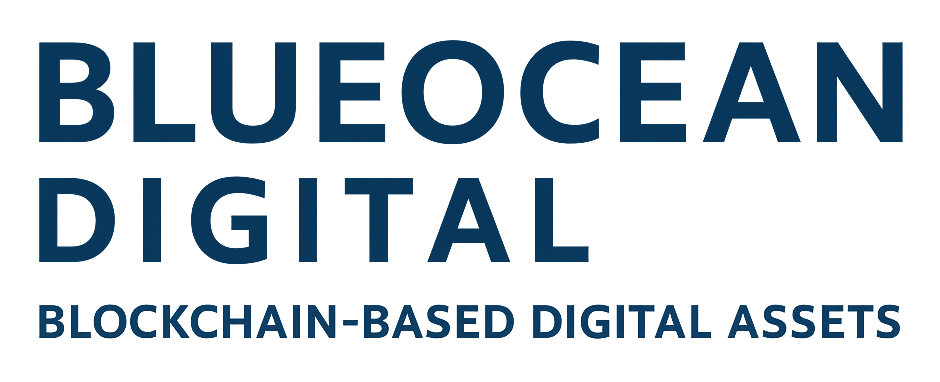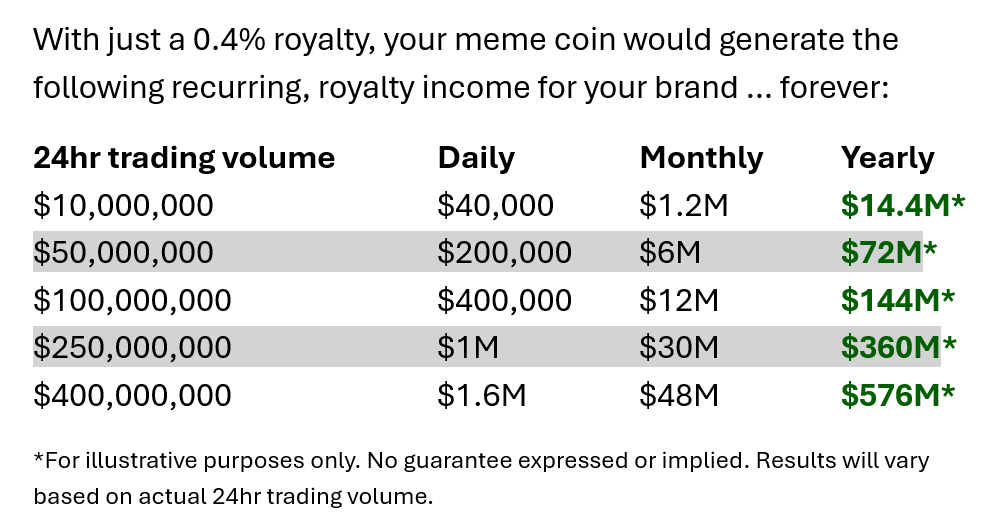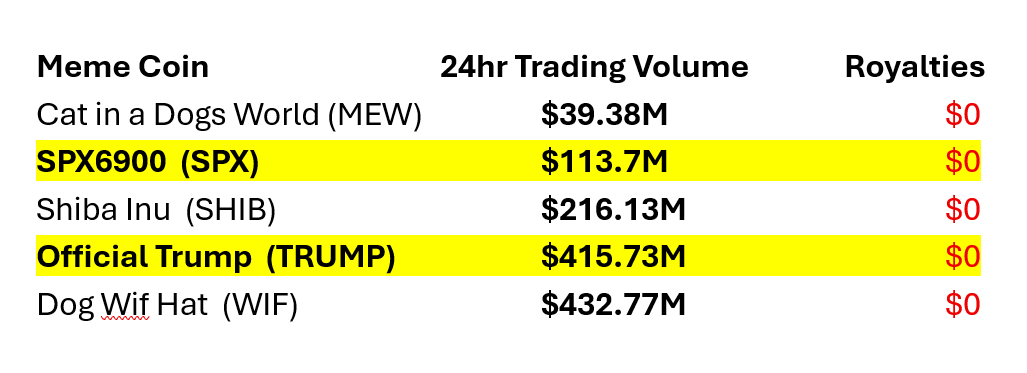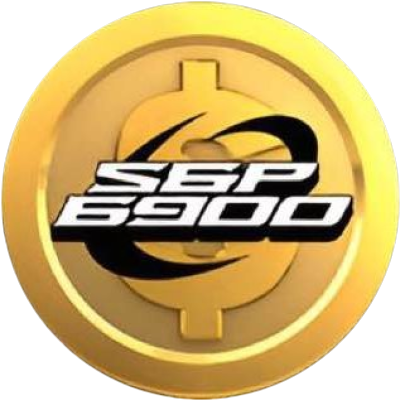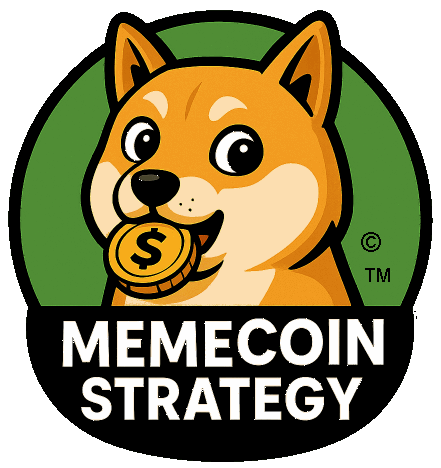What is a "Memecoin?"
Memecoin Strategy ...
Are memecoins a scam?
The concept of "cryptocurrency" has been met with resistence, with some people decrying even bitcoin as a scam (even though ETFs, corporations and countries now recognize bitcoin as a legitimate, hard money asset worthy of being held as a reserve)! All cryptos have in common the ability to be self custodied (held by their owners in an encrypted, private account that they control, called a "wallet"). Cryptos can also be transferred peer-to-peer, usually within seconds, for very little cost, and have a ledger that keeps track of and verifies, every transaction. Crypto isn't a scam, it's a technology.
Memecoins are a type of cryptocurrency that have no intrinsic value, no use case, and that offer no promise of profit or ownership rights (beyond owning the memecoin, itself). For these reasons, the SEC does not consider most memecoins to be securities and, instead, considers them a type of "digital collectible".
Like sneakers, baseball cards and vintage comic books, people buy memecoins because of a connection to their theme, their historic significance, their cuteness, their humor, and the hope that they might increase in speculative, secondary market value. Unlike other collectibles, memecoins trade 24/7, 365 days a year on decentralized crypto exchanges, making them extremely liquid.
As speculative, digital assets, memecoins represent the ability to monetize attention. The more attention a particular memecoin receives, the greater its potential to increase in speculative, secondary market value. This is simply because more people learn about the memecoin and can then decide to buy it. As speculative digital assets, memecoins are not a scam ... but some cryptos are launched by bad actors who use deceptive schemes intended to defraud others out of their hard earned money.
The mission of MemecoinStrategy is to build a brand that is synonymous with trust, through repeatitive acts of honesty. We have a longterm mindset and believe that by having integrity (doing the right thing when no one is watching) and treating all parties honestly and fairly, we will succeed at launching multi-cycle memecoins that will benefit our holders, brand partners, and the greater crypto industry as a whole.
SCAMMERS
Whenever there is a lot of money involved, there are scammers who work to game the system, and separate people from their hard earned savings. To understand how crypto launch scams work, you need to have a basic understanding of how decentralized exchanges work.
Every cryptocoin is launched with a liquidity pool, in which the developer deposits equal amounts of their coin and a value token. On the Solana blockchain, the value token is usually Solana (SOL) or a stable coin like Tether (USDT). If you have 200,000,000 memecoins and 100 SOL in a coin's liquidity pool, it means the value of 200M coins is equal to the value of 100 SOL.
The way token prices rise and fall is based on people buying or selling a coin into its liquidity pool. When people buy a memecoin they trade value tokens for it, which are added to the value token side of its liquidity pool. At the same time, they withdraw memecoins which are subtracted from the memecoin side of its liquidity pool. Less memecoins remain in the liquidity pool which are then worth more because there are now more value tokens held in the pool.
For example:
Let's say there are 1 Billion total memecoin tokens minted (total token supply).
200 Million of the memecoin token are paired with 100 SOL and held in its liquidity pool.
100 Million of the memecoins are traded for 200 SOL.
That means there would be 100 Million memecoin tokens left in the pool and 300 SOL.
The remaining 100M memecoin tokens would then be worth 300 SOL because both sides are always equal in value.
When someone sells their memecoins they trade them for SOL, creating an opposite effect. They adde memecoins into the liquidity pool while withdrawing value tokens, causing the value of the remaining mmemecoin tokens to decline.
PUMP-N-DUMP RUG PULLS -- Many scam developers launch coins and hold back a very large percentage of the supply for themselves. Then, after the coin has increased in value, they will sell their supply into the liquidity pool, withdrawing almost all of the value tokens! Some scammers are happy to rug pull for $1,000 or less in value, while others will wait to run off with millions! Regardless, the result is the same ... unsuspecting buyers end up losing all the value they originall traded and are left holding worthless tokens!
For example:
Let's say there are 1 Billion total memecoin tokens minted by a scam developer.
They keep 800M tokens for themselves (80% of the token supply).
200M of the token are paired with 100 SOL and added to its liquidity pool.
100M of the token are traded for 200 SOL, leaving 100M tokens and 300 SOL in its liquidity pool.
The developer sells the 800M tokens they kept for themselves, withdrawing almost all of the value tokens from the pool.
The result 900,000,000 memecoins and maybe 2 SOL remain in the liquidity pool!
The 100M memecoins that were traded for 200 SOL can now only be redeemed for the approx. 2 SOL that remains in the pool and the scammers get away with 298 SOL!
To make matters worse, scam developers now use "bundler" software designed to hide the number of tokens they actually control. Instead of holding all their tokens in a single wallet, which would be easy to see, they spread out the supply they control across hundreds or thousands of different wallet addresses (accounts) to make it look like there are more buyers of the coin than there really is (more demand) and less risk of a rug pull. They even have software that performs "wash trading" so it loosk like these wallets are buying and selling the token! Once enough real buyers are fooled into buying their scam token, they press a button and all the wallets they control start selling so they can withdraw as much SOL from its liquidity pool as possible!
LIQUIDITY POOL TOKEN RUG PULLS -- Another, even easier way for scammers to perform a "rug pull" is to simply not burn its Liquidity Pool token. This allows them to redeem their LP token and withdraw all the liquidity (memecoins and value tokens) at once!
TRANSFER TAX RUG PULLS -- Another, way for scammers to perform a "rug pull" is to not rescind their ability to change the transfer tax charged when people buy and sell a token. This allows them to change the tax to 100% so when someone goest to sell their tokens they simply give them back to the scammer who is able to collect all the tokens and redeem them for SOL!
INFLUENCER RUG PULLS -- Some scam developers will work with influencers to launch a memecoin that the influencer will help promote. This comes in two flavors: KOLs (Key Opinion Leaders) who receive a large amount of the supply to promote a new coin, and then dump it when the coin pumps; Partner Influencers who launch their own coin.
Scammers (flush with money from scamming other victims) have been known to offer $150,000 upfront to partner with influencers so they will tweet about their new memecoin, causing their fans and crypto speculators to start buying. The scammers then perform a rug pull and advise the influencer to say their account was hacked so they aren't held responsible for their tweet. The influencer keeps the upfront money they received but is left to deal with reputational damage while the scammers disappear with millions.
Crypto scams have destroyed credibility in the crypto industry, and extracted billions. It's believed that the current lack luster altcoin season could be due to a combination of scams extracting real money from retail so they can't reinvest it, and the sheer volume of new coins constantly being released every month.
Let's take a look at some of the more notorious memecoin scams from recent history, and how Memecoin Strategy would prevent them:
1. LIBRA
The team behind the launch of LIBRA convinced Javier Melei, the President of Argentina, to tweet about its launch, giving it legitimacy and causing a rush of crypto buyers to start buying. Shortly after its launch, insiders sold a large percentage of its supply, crashing the price and extracting over $100 Million from the coins liquidity pool!
2. OFFICIAL MELANIA
Launched shortly after the OFFICIAL TRUMP memecoin, the team behind the launch of OFFICIAL MELANIA used insider knowledge to purchase $1 million worth of MELANIA tokens, just minutes before the launch officially went live. These insiders then sold their supply several hours later for a gain of almost $21 Million!
3. HAWK TUAH (HAWK)
Haily Welch became an internet sensation due to a viral YouTube and TikTok video. Wanting to capitalize on her fame, she started a podcast called Talk Tuah. A developer team offered Haily $150,000 to announce her official HAWK coin. Shortly after her announcement, the HAWK coin spiked in price as people rushed to buy it, allowing insiders to sell a large percentage of the supply, crashing the price and allowing them to run off with millions ... leaving Haily to deal with the reputational damage.
How will a Memecoin Strategy launch overcome these issues?
First and foremost, we will deal everyone involved with our launches fairly and with integrity. We have no interest in running short term crypto scams. Our mission is to build a brand based on honesty, transparency and integrity so we can bless others and be blessed with amazing new opportunities.
Insiders will have no access to purchase any more than anyone else, due to the proprietary apps that we've developed.
First, we would never launch a new token directly on Raydium. Instead, our brand partners would announce a registration period when people can register to claim free tokens during an "airdrop." After registering, they would need to qualify to receive free tokens by completing some quests on social media designed to create even more awareness of the launch (for example, by reposting a pinned post on X).
When people register for the airdrop, they will be joining our email newsletter list so were able to communicate with them directly about the current and future projects. By doing our job correctly, these users will be looking forward to participating in future memecoin launches, too, making future launches even easier to market.
Once we have reached the minimum number of qualified, registered users for an airdrop, the date of the coins presale would be announced. No purchase is necessary to receive free tokens, but those who purchase during the presale will receive more tokens than those who don't. This is designed to encourage participation in the presale and to concentrate the majority of airdropped tokens in the hands of those who made a purchase and who are less likely to sell them as soon as they're received.
As a security measure, only whitelisted Phantom wallets will be compatible with our Airdrop and Presale apps. This allows us to prevent someone from simply switching wallets to make more purchases, since every wallet would need to be whitelisted.
During our presales, all whitelisted wallets will be limited to purchasing a maximum of 1 SOL worth of the memecoin. This is intended to minimize whale wallet accumulation while protecting buyers from becoming overly exhuberant and risking more than they can afford to lose. This also allows all presale buyers to purchase their memecoins for the same price as every other presale buyer so 75% of the coins supply is sold with no one getting a better price than anyone else!
Our presales will be designed to allow 20% of the total number of whitelisted wallets to purchase the maximum amount before the presale is sold out. In otherwords, if 5,000 people aree qualified for the airdrop, only the first 1,000 would be able to purchase the maximum amount, each. If the first 1,000 purchased the max amount, it would mean 4,000 people, who might have wanted to buy, would have missed out on their ability to purchase during the presale.
The next step would be listing the memecoin is listed on Raydium and burning its liquidity token. Once the coin goes live on decentralized exchanges, the 80% who were unable to buy during the presale would be able to start buying on Raydium, for the same starting price as the presale price! The idea is to have legitimate demand for the coin so trading begins immediately, once listed on Raydium.
Airdropped tokens would be able to be claimed 24 - 48 hours after the coin is listed on Raydium. While no purchase is necessary to receive free tokens, those who participated during the presale will receive more airdropped tokens than those who didn't. This is to encourage presale participation while also minimizing the number of airdropped tokens that'll be sold immediately after being claimed.
Memecoins are not scams, but there are a lot of scammers in the space. Our mission is to differentiate MemecoinStrategy as abrand recognized as the premiere, legitimate memecoin launchpad.
PNUT was launched to protest local authorities who confiscated and euthanized an adorable pet squirell named Peanut. As of 7/3/2025, PNUT is ranked #168 on Coinmarketcap.com, out of millions of cryptocurrencies, with a total marketcap of $241M, and daily trading volume of $212M!
Whenever there is a lot of money involved, there are scammers who work to game the system. To understand how these scams work, you need to have a basic understanding of how decentralized exchanges work.
Every memecoin is launched with a liquidity pool, in which the developer deposits equal amounts of memecoins and value tokens. On the Solana blockchain, the value token is usually Solana (SOL) or a stable coin like Tether (USDT). If you have 200,000,000 memecoins and 100 SOL in the liquidity pool, it means the value of 200M memecoins is equal to the value of 100 SOL (approximately $15,300 as of this writing).
The way token prices rise and fall is based on people buying or selling the memecoin into the liquidity pool. As people buy the memecoin, they add value tokens to its liquidity pool while withdrawing memecoins from the pool. This makes the memecoins that remain increase in value because a smaller number of memecoins are now worth as much as the increased quantity of the value tokens (for example if there are 200M memecoins and 100 Solana (SOL) in the pool and 100M are bought for 50 SOL, there would remain 100M memecoins and 150 SOL ... meaning the value of the remaining 100M memecoins is the same as 150 Solana (SOL).
PUMP-N-DUMP RUG PULLS -- Many scam developers will launch memecoins and hold back a very large percentage of the supply for themselves. Then, after the coin has gone up in value, they will sell their supply into the liquidity pool, withdrawing all of the value tokens! Some scammers are happy to rug pull for $1,000 or less in value, while others will wait to run off with hundreds of millions! Regardless, the result is the same ... the remaining buyers end up losing all the value they originall traded and are left holding worthless tokens.
For example:
Let's say there are 1 Billion total memecoin tokens minted by a scam developer.
They keep 800M tokens (80% of the token supply) for themselves.
200M of the token are paired with 100 SOL and added to its liquidity pool.
After the number of SOL in the pool has increased to 500 SOL, the developer sells the 800M tokens they kept for themselves.
This results in 850,000,000 memecoins and maybe 2 SOL remaining in the liquidity pool.
The 150M memecoins that were sold for 400 SOL can now only be redeemed for the approximately 2 SOL that remains in the pool.
To make matters worse, scam developers now use "bundler" software designed to hide the amount of tokens they control. Instead of holding all their tokens in a single wallet, which would be easy to see, they will spread out their supply cross hundreds or thousands of different wallets (accounts) making it look like there are more buyers of the coin than there really are. They even have software that performs "wash trading" that makes it look like these wallets are buying and selling their token! Once enough real buyers are fooled into buying their token, they press a button and all the wallets they control start selling so they can withdraw all the value from its liquidity pool!
LIQUIDITY POOL TOKEN RUG PULLS -- Another way for scammers to perform a "rug pull" is to not burn the Liquidity Pool token. This way they can redeem their LP token and withdraw all the liquidity from the pool (memecoins and value tokens) at once!
INFLUENCER RUG PULLS -- Some scam developers will work with influencers to launch a memecoin that the influencer will help promote. They have offered $150,000 upfront for influencers to tweet about their new memecoin, causing a rush of fans and crypto speculators to begin buying. The scammers perform a rug pull and the influencer is advised to say their account was hacked and they weren't responsible for the tweet. The influencer keeps the upfront money they received and is left to deal with reputational damage while the scammers disappear with millions in value.
